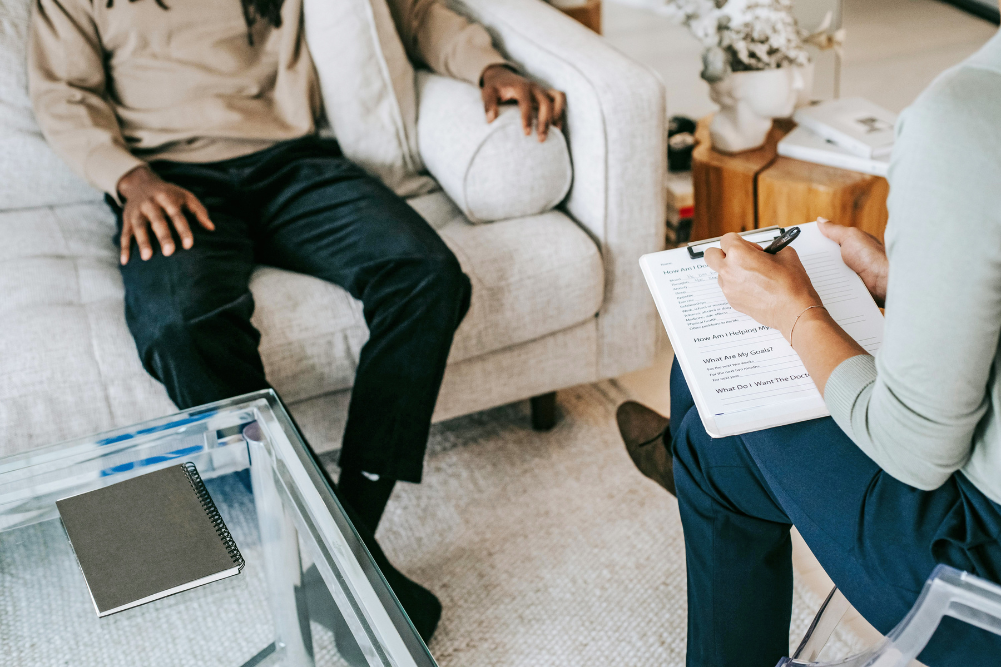Put a Stop to Road Rage
You’ve probably experienced road rage: tailgating, light-flashing and abusive language and signs. While such behaviour might not classify as full-blown road rage, if you consider it as a spectrum of behaviour from mild to severe, everyone has probably registered on the dial at some time as perpetrators as well as victims. While some instances of road rage can seem appalling, taking a look at your own driving patterns can go some way towards revealing typical motivations behind this vehicle-based violence.
Your driving self
The human being is a complex organism, with an infinite combination of motivations, aspirations, resistances and characteristics that drive it. Sometimes its as if a whole array of personalities exists inside one head, competing for airtime. Certain situations or certain people tend to bring out particular personalities. Your work role might encourage you to be efficient and conscientious; your parenting role might bring forth nurturing and responsibility; friendships might elicit wit and humour. These are obvious personalities you assume, but far less apparent is the personality you assume when you drive a car.
A useful question to consider is, ""Who am I when I am driving?"" What qualities emerge or become heightened when you drive? What persona do you assume? There are two things to consider here: first, your driving style, and second, your driving behaviour. Driving style is how you handle the car. Driving behaviour is how you act while you handle the car.
Whats your style?
Your driving style, for example, might be pretty efficient and direct, although some might find it a little wild at times. Here are some examples of driving styles that might fit you, or you can find your own description:
- Careful and cautious
- Frightened and timid
- Aggressive and pushy
- Wild and out of control
- Spontaneous and opportunistic
- Cruisy and nonchalant
Remember to take in others feedback on your driving style, as it could be important information!
Once you have identified your style, see if it reflects aspects of your personality. For example, if you’re a fairly organised and disciplined person, your driving style might reflect this; at the same time, your style might reflect a wildness that is quite familiar although expressed only in certain contexts. It’s interesting that the car is one of those contexts or places. Have a look at what your driving style reveals. Are you familiar with this part of yourself? At what other times or places is this part of you expressed, if at all? If it’s not expressed elsewhere, should it be? For example, are you adventurous and risk-taking on the roads when, really, this behaviour could be channelled more productively and safely into some other area of your life?
Your driving style might be a fairly accurate snapshot of your personality, whether you consciously acknowledge this or not. This is where others’ feedback can be useful. If people describe you as impatient or aggressive while driving, this could be an aspect of your personality waiting for recognition and integration. You might want to check whether you behave similarly in other contexts without realising it.
Behaving on the road
Driving behaviour, the second aspect of driving to consider, is usually even more revealing. Do you find you’re usually a fairly calm person but your driving behaviour is often selfish and intolerant? Do you find that after a few minutes on the road you are criticising every second driver? You’ll see plenty of other different types of characters behind the wheel, too. There are the young, macho P-platers ready with a rude sign or gesture if you impede their frenzied progress. There are the privileged luxury-car drivers who believe its their right to push in if they need to yet might find it beneath them to let others in. There are the glamorous executives who look sophisticated but are surprisingly ready with pushy tactics and rude comments. There are the cool drivers who are impatient and quick to rage. Then there are the types who can hardly bear to let you into traffic but don’t want to risk looking bad.
Again, ask what aspect of yourself is revealed in your driving behaviour. You can be guaranteed you engage in some behaviour while driving that you wouldn’t dream of doing if you were face-to-face with a person. This is one reason why there can be so much bad behaviour on the roads. Usually, when you deal with people, there’s nothing between you and the other person; no metal capsule to hide in. If you’re angry with someone, you wouldn’t normally give them the finger to their face or hurl a barrage of bad language at them. We manage our anger even to the extent of repressing it. On the road, though, there is literally a barrier, or buffer, between you and the other person.
Since a car puts distance between you and others, there seems to be a freedom to behave in ways you wouldn’t in a face-to-face encounter. You can feel anonymous and immune to the repercussions of your behaviour. It’s a non-intimate form of expression. Imagine if you behaved with your friends the way you might when you drive. In terms of my own driving style, I know my intolerance and selfishness would not get me far!
Repression and expression
Why are certain behaviours played out on the road? In everyday life, you tend to mould your behaviour and yourself to fit in with other people. Naturally, you want to be liked by others and have their approval, so you act in ways that will achieve this aim. What this means, however, is that certain personality characteristics or emotions are not given space to be expressed, perhaps because you think it will make you look bad or might hurt the other person. You might put the lid on such behaviour, repressing the emotion or even denying it is there. The trouble is, the emotions do still exist. They will be waiting below the surface for a chance to be given airtime. Times of stress can lower your natural defences and these behaviours can rush out, scrambling for the opportunity to be expressed.
Driving on city roads can create just such stressful circumstances. Times when you feel hidden and anonymous can also be opportunities for this shadow self to be revealed. Being contained in the anonymous capsule of your car provides the perfect opportunity: that person you made the rude gesture to will be gone in a few seconds; you will probably never see the person you bad-mouthed again in your life. There are no repercussions! You can be your worst self without fear of being found out. If you think about your own behaviour and then think about someone who is more repressed or more angry than you, youll understand why some people explode on the roads. People under more stress or with more reasons to be angry are more likely to engage in worse behaviour.
What happens with anger and other such emotions not sanctioned in our culture is that if they cant be expressed directly, in the moment, about the actual event, they will be triggered later by something that reminds you of the situation. This is called conversion. Instead of being angry about your boss, partner, kids, finances, politicians and so on, you become provoked by the person who just cut you off in traffic or pulled out without looking.
There are a thousand stressors in modern life, and our culture gives very few ways to express this stress. You can write a letter to the editor of a newspaper about some injustice and it might help, but it’s not as immediate or vocal as yelling at someone on the road. You might daydream about telling management exactly what you think of their policies but could not do so in real life if you want to keep your job. Instead, you bad-mouth someone on the road.
Roads mirror society
Modern life can be extremely stressful. The pace is hectic. You have to manage multiple roles in limited time. You demand more of yourself and more of others. Even day-to-day activities such as bill-paying and banking can generate frustration and anger. Streamlining and cost-cutting in industry mean the ordinary person has to pay with their time instead of industry paying. Politics and economics seem to favour the rich, so the average person becomes disempowered and angry. No wonder there is anger on the roads! When you think of the stressors of modern life and the relative freedom of expression that being hidden in a car gives, its actually a wonder there arent more incidents.
Our roads are like a microcosm of society. In a relatively small space, thousands of different individuals have to negotiate their needs and accommodate the needs of others. Some people feel their needs are never taken into consideration, so why would they take others needs into account on the roads? Others are used to always having their needs met, so they will resent having to accommodate those of others. The roads are a place where intolerance and unresolved differences are revealed. On the whole the system works, in that most of us get to where we need to go unscathed. It could be better, however. Its the same with society: there is a lot that works but much that needs to be worked on. The increase in road rage and the severity of incidents might be revealing our culture is under stress. We are being asked to deal with too much, and too many needs are being ignored.
Taking a different turn
On a personal level, your driving behaviour might reveal the areas of yourself you still need to work on. You can do all the meditation, personal growth courses and therapy you like, but if you’re still frustrated or abusive when you drive, there is still work to be done. Driving can be a great opportunity to develop humility. It’s a way of seeing just how impatient, intolerant or driven you are.
You can actually use your driving time as an opportunity to do an active meditation. Each time someone cuts you off or drives badly, you can practise equanimity; breathe deeply and let the incident go. Every few moments there will be an opportunity to practise forgiveness, generosity or tolerance. You might say, "Who needs personal growth courses when there is opportunity for growth each day on the road?"
There are more ways to use your driving time productively. You can listen to inspiring or educational tapes. You can get in hundreds of those affirmations on the way to work. You can also do anger therapy. There are very few places where its appropriate to make a lot of noise, to scream and shout. People are often rather reserved within the limits they place on emotional expression (sometimes to their detriment) and they never have the opportunity to let off steam. The beauty of being in a car, however, is no one can hear you scream. So, if you want to vent anger, do some yelling while you drive not at other drivers but just to yourself! (You might want to tone it down at traffic lights unless you dont mind the bemused looks of other drivers.)
One way to deal with your own road rage is to address the real issues. If you have become inordinately angry on the roads, it might indicate there are other issues you are not attending to. The road might just be the channel for this unresolved anger, distress or frustration. Dealing with things directly is always healthier and you move through the issues more quickly instead of having them arise constantly in your driving. The roads can be challenging enough without them being the place where you have to experience your displaced frustration.
If you are the victim of road rage, remember there are many angry, disempowered people driving out there, so don’t inflame the situation. You don’t want to be the target of some misdirected aggression or frustration. Drive away from the aggressor, even if it means having to make an unplanned detour. Even if you are in the right, defending your position might not be worth the risk of being attacked. Use it as an opportunity to transcend the immediate situation. Let the incident go. If necessary, let your frustration out later when you are away from the aggressor. Your contribution on the roads becomes your contribution to our culture. Drive to make a difference.







